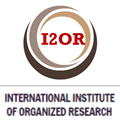Supervivencia de los pacientes con Linfoma No Hodgkin Difuso B de Células Grandes
Palabras clave:
linfoma no hodgkin, linfoma de células B grandes difuso, supervivenciaResumen
Introducción: los linfomas no Hodgkin son, en la actualidad, un problema de salud. Los linfomas difusos B de células grandes representan el 80% del total de los casos; en Cuba constituyen el 30% del total de los pacientes diagnosticados con linfomas anualmente. Objetivo: evaluar la supervivencia global y libre de eventos según el tratamiento recibido en primera línea. Método: se realizó un estudio analítico, longitudinal y prospectivo en adultos con linfoma no Hodgkin difuso B de células grandes en Villa Clara entre los años 2006 y 2015. Resultados: la muestra quedó conformada por 102 pacientes; el 67,7% eran del sexo masculino. Del total de la muestra 70 pacientes recibieron tratamiento con esquema ciclofosfamida, doxorrubicina, vincristina y prednisona sin rituximab mientras el resto empleó el anticuerpo monoclonal como parte de la terapia. La supervivencia global fue de 96,9% para los que fueron tratados con rituximab y de un 77,1% para los que no lo recibieron. La supervivencia libre de eventos fue superior en los pacientes que recibieron rituximab en todos los cortes de tiempo analizados. La supervivencia global fue menor en pacientes con mayor riesgo al debut. Conclusiones: los pacientes que recibieron inmunoquimioterapia tuvieron una supervivencia global y libre de eventos significativamente superior a la de los que usaron solo quimioterapia.Descargas
Citas
1. Jaffe ES, Pittaluga S. Aggressive B-cell lymphomas: a review of new and old entities in the WHO classification. Hematology Am Soc Hematol Educ Program [Internet]. 2011 [Citado 15 ene 2013];2011: 506-14. Disponible en: https://www.ncbi.nlm.nih.gov/pubmed/22160082
2. Tilly H, Dreyling M. Diffuse large B-cell non-Hodgkin’s lymphoma: ESMO clinical practice guidelines for diagnosis, treatment and follow-up. Ann Oncol [Internet]. 2015 [Citado 15 ene 2013];26(Suppl 5):v116-v125. Disponible en: http://www.esmo.org/Guidelines/Haematological-Malignancies/Diffuse-Large-B-Cell-Lymphoma
3. National Comprehensive Cancer Network. Non-Hodgkin’s lymphomas. Clinical practice guidelines in oncology. NCCN Guidelines version 2 [Internet]. 2012 [Citado 15 ene 2013]. Disponible en: https://www.nccn.org/about/nhl.pdf
4. Shankland KR, Armitage JO, Hancock BW: Non-Hodgkin lymphoma. Lancet [Internet]. 2012 Sep [Citado 15 ene 2013];380(9844): 848-57. Disponible en: https://www.ncbi.nlm.nih.gov/pubmed/22835603
5. Larouche JF. Lymphoma Recurrence 5 Years or Later Following Diffuse Large B-cell Lymphoma: Clinical Characteristics and Outcome. J Clin Oncol [Internet]. 2010 Abr [Citado 15 ene 2013];28:2094-2100. Disponible en: http://ascopubs.org/doi/full/10.1200/jco.2009.24.5860
6. Lenz G, Staudt LM. Aggressive lymphomas. N Engl J Med [Internet]. 2010 Apr 15 [Citado 15 ene 2013];362(15):1417–29. Disponible en: http://www.nejm.org/doi/full/10.1056/NEJMra0807082
7. Staudt LM, II Therapy of DLBCL based on genomics. Hematol Oncol. 2013;31:S26–S28. doi: 10.1002/hon.2062
8. Cultrera JL, Dalia SM. Diffuse large B-cell lymphoma: current strategies and future directions. Cancer Control [Internet]. 2012 Jul [Citado 15 ene 2013];19(3): 204-13. Disponible en: https://www.ncbi.nlm.nih.gov/pubmed/22710896
9. Perry AM, Mitrovic Z, Chan WC. Biological prognostic markers in diffuse large B-cell lymphoma. Cancer Control [Internet]. 2012 Jul [Citado 15 ene 2013];19(3):214-26. Disponible en: https://www.ncbi.nlm.nih.gov/pubmed/22710897
10. Said JW. Aggressive B-cell lymphomas: how many categories do we need? Mod Pathol [Internet]. 2013 Jan [Citado 21 Jul 2016];26 Suppl 1:S42-56. Disponible en: https://www.ncbi.nlm.nih.gov/pmc/articles/PMC4406768/
11. Swerdlow SH, Campo E, Harris NL, Jaffe ES, Pileri SA, Stein H, et al. Who classification of tumors of haematopoietic and lymphoid tissues. 4th ed. Lyon: IARC Press; 2008.
12. Campo E, Swerdlow SH, Harris NL, Pileri S, Stein H, Jaffe ES. The 2008 WHO classification of lymphoid neoplasms and beyond: evolving concepts and practical applications. Blood [Internet]. 2011 May 12 [Citado 15 ene 2013];117(19): 5019-32. Disponible en: https://www.ncbi.nlm.nih.gov/pubmed/21300984
13. Sehn LH. Paramount prognostic factors that guide therapeutic strategies in diffuse large B-cell lymphoma. Hematology Am Soc Hematol Educ Program [Internet]. 2012 [Citado 15 ene 2013];2012: 402-9. Disponible en: https://www.ncbi.nlm.nih.gov/pubmed/23233611
14. Guevara NM, Jaramillo PE, Rendón J, Gaviria LM. Caracterización de factores pronósticos al diagnóstico de pacientes con Linfoma B difuso de células grandes en un Hospital Universitario, 2009-2012. Acta Med Colomb [Internet]. 2014[Citado 15 ene 2013];39: 137-147. Disponible en: http://www.scielo.org.co/pdf/amc/v39n2/v39n2a09.pdf
15. Coiffer B, Lepage E, Briere J, et al. CHOP chemotherapy plus Rituximab compared with CHOP alone in elderly patients with diffuse large-B-cell lymphoma. N Engl J Med [Internet]. 2002 Jun 24 [Citado 15 ene 2013];346(4) : 235-242. Disponible en: https://www.ncbi.nlm.nih.gov/pubmed/11807147
16. Pfreundschuh M, Trumper L, Osterborg A. CHOP-like chemotherapy plus Rituximab versus CHOP-like chemotherapy alone in young patients with good prognosis diffuse large-B –cell lymphoma: a randomise controlled by the Mabthera International Trial(MinT) Group. Lancet Oncol [Internet]. 2006 May [Citado 21 jul 2016];7(5): 379-391. Disponible en: https://www.ncbi.nlm.nih.gov/pubmed/16648042
17. Pfreundschuh M, Kuhnt E, Trümper L, Osterborg A, Trneny M, Shepherd L, et al. CHOP-like chemotherapy with or without rituximab in young patients with good-prognosis diffuse large-B-cell lymphoma: 6-year results of an open-label randomised study of the MabThera International Trial (MInT) Group. Lancet Oncol. 2011 Oct;12(11):1013-22 doi: 10.1016/S1470-2045(11)70235-2. Epub 2011 Sep 21.
18. Gutiérrez-García G, Colomo L, Villamor N, Arenillas L, Martínez A, Cardesa T. Clinico-biological characterization and outcome of primary nodal and extranodal diffuse large B-cell lymphoma in the rituximab era. Leuk Lymphoma. 2010 Jul;51(7):1225-32. doi: 10.3109/10428194.2010.483301.
19. Persky DO, Unger JM, Spier CM. Phase 2 study of rituximab plus three cycles of CHOP and involved-field radiotherapy for patients with limited-stage aggressive B cell lymphoma: Southwest Oncology Group study 0014. J Clin Oncol [Internet]. 2008 may [Citado 21 Jul 2016];26(14): 2258-2263. Disponible en: http://ascopubs.org/doi/abs/10.1200/jco.2007.13.6929
20. Cunningham D, Smith P, Mouncey P. A phase 3 trial comparing R-CHOP 14 and RCHOP 21 for the treatment of patients with newly diagnosed diffuse large B-cell non-Hodgkin lymphoma (abstract). J Clin Oncol [Internet]. 2009 May [Citado 21 Jul 2016];27(15s): Abstract 8506. Disponible en: http://ascopubs.org/doi/abs/10.1200/jco.2009.27.15_suppl.8506
Publicado
Cómo citar
Número
Sección
Licencia
Aquellos autores/as que tengan publicaciones con esta revista, aceptan los términos siguientes:
- Los autores/as conservarán sus derechos de autor y ceden a la revista el derecho de primera publicación de su obra, el cuál estará simultáneamente sujeto a una licencia Creative Commons Atribución/Reconocimiento-NoComercial 4.0 Internacional — CC BY-NC 4.0 que permite a terceros compartir la obra siempre que se indique su autor y su primera publicación esta revista.
- Los autores/as podrán adoptar otros acuerdos de licencia no exclusiva de distribución de la versión de la obra publicada (p. ej.: depositarla en un repositorio institucional o publicarla en un volumen monográfico) siempre que se indique la publicación inicial en esta revista.
- Se permite y recomienda a los autores/as difundir su obra a través de Internet (p. ej.: en archivos telemáticos institucionales o en su página web) antes y durante el proceso de envío, lo cual puede producir intercambios interesantes y aumentar las citas de la obra publicada. (Véase El efecto del acceso abierto).





 1 de enero 2026
1 de enero 2026


